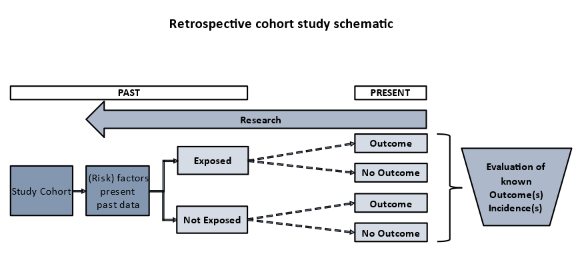1. Cohort studies
1.3. Retrospective cohort studies
The methodology in retrospective cohort studies is similar to that in prospective cohort studies. However, in contrast to prospective studies, retrospective studies are conceived after both, the exposure and the outcomes, have already occurred. The exposures are determined before looking at the existing outcome data to see whether exposure to a (risk) factor is associated with a statistically significant difference in the outcome incidences. Cohorts are defined first according to whether or not the outcome was observed and second, going back in time, by identifying a cohort of individuals at a point in time before they had developed the outcome(s) of interest. Further, in order to classify individuals as "exposed" or "unexposed", investigators try to establish their exposure status at that point in time. For this, information or data, obtained in the past, often for other purposes, is collected from existing sources (e.g., health or employment records, data from previous, prospective studies). The cohort is then “followed up” retrospectively to determine whether and how many individuals subsequently developed the outcome(s) of interest.
The following figure shows a schematic of the principal setup of a retrospective cohort study.

Figure 3: Principal setup of a retrospective cohort study.